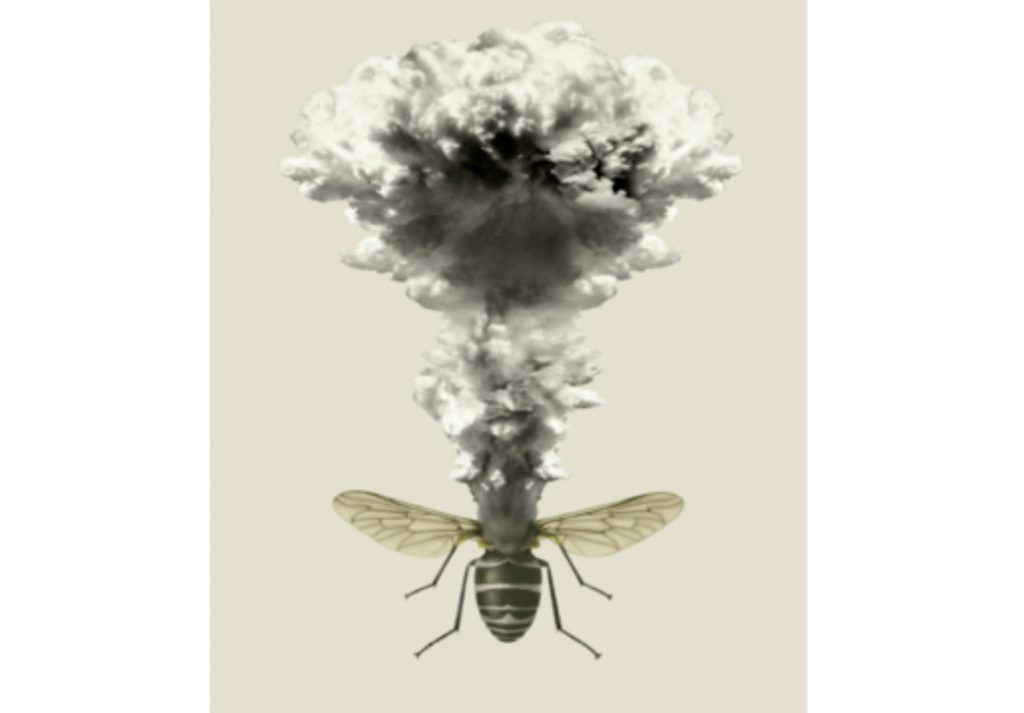
For the past four years, journalists and environmental bloggers have been churning out alarming stories that insects are vanishing, in the United States and globally. Limited available evidence lends credence to reasonable concerns, not least because insects are crucial components of many ecosystems. But the issue has often been framed in catastrophic terms, with predictions of a near-inevitable and imminent ecological collapse that would break ecosystems, destroy harvests, and trigger widespread starvation. Most of the proposed solutions would require a dramatic retooling of many aspects of modern life, from urbanization to agriculture.
Considering the disruptive economic and social trade-offs being demanded by some of those promoting the crisis hypothesis, it’s prudent to separate genuine threats from agenda-driven hyperbole. Are insect declines really threatening to precipitate a catastrophic ecological crisis? And, given the available data, what should a responsible society be doing?
Roots of the insect crisis narrative
The recent hyper-focus on insects can be traced back to a 2017 study conducted by an obscure German entomological society, which claimed that flying insects in German nature reserves had decreased by 76 percent over just 26 years. The study, co-authored by 12 scientists, lit a fire in advocacy circles and became the sixth-most-discussed scientific paper of that year. It remains popular today.
Headlines swept the world predicting imminent “ecological Armageddon,” a chilling turn of phrase provided by Dave Goulson, a professor at the University of Sussex and one of the paper’s co-authors. Goulson was a relatively unknown English biology professor at the time, but rapidly became the public face of the crisis narrative. Although these claims were received with immediate and widespread skepticism in the entomology community, journalists seized on the “end of world” narrative and energetically amplified it. “The Insect Apocalypse Is Here,” announced the New York Times Magazine in November 2018, and illustrated its cover story with this image:
The lengthy feature, written by Brooke Jarvis, was filled with speculation about the imminent “complete” disappearance of insects, and freely employed language such as “chaos,” “collapse,” “ecological dark age,” and “Armageddon.” Compounding this looming catastrophe, our most despised pests — from cockroaches to house flies — would largely be spared, booming out of control as beneficial insects vanished.
Jarvis’s conclusion? The world is facing a loss of biodiversity, what she called the “sixth extinction.” And it will get worse; the insect declines are the canary in the ecological mine. Goulson was the essay’s featured scientist and Jarvis poignantly described him choking up as he shared his devastating prognosis: “‘If we lose insects, life on earth will…’ He trailed off, pausing for what felt like a long time.”
The tsunami of crisis articles certainly served as a wake-up call. But to what? A number of studies suggest that insect populations are declining in some areas of the world (but not in others) or that certain kinds of insects (taxa) may be in decline in those regions (even as others are increasing). But Armageddon? Such catastrophic framing and the policy implications that follow are significant.
Perhaps the inflammatory rhetoric, which continues today, is justified. But what if it isn’t? Entomologists and insect ecologists all over the world do need more support and funding to fully evaluate concerns. But many scientists believe that what should be an evidence-driven evaluation has become an ideological litmus test for the environmental media and advocacy-focused scientists.
What are the facts?
The Times essay might read like a clear and convincing polemic, but it fell flat with the science community, which spent much of the next four years trying to calm the consequent hysteria. Manu Saunders is a prominent entomologist, and recipient of the Office of Environment & Heritage/Ecological Society of Australia Award for Outstanding Science Outreach. In 2019, she and her colleagues Jasmine Janes and James O’Hanlon outlined the science-based perspective in a paper for BioScience, where they examined the headline-grabbing apocalypse studies that had appeared to date. They summarized their conclusions in a post for Ecology Is Not a Dirty Word, a highly respected blog that Saunders oversees:
“[F]ocusing on a hyped global apocalypse narrative distracts us from the more important insect conservation issues that we can tackle right now. Promoting this narrative as fact also sends the wrong message about how science works, and could have huge impacts on public understanding of science. … And, frankly, it’s just depressing.”
Of one of the major studies used to promote the apocalypse narrative (Sánchez-Bayo), Saunders noted an appallingly selective and apparently willful misrepresentation and manipulation of the data:
“From a scientific perspective, there is so much wrong with the paper, it really shouldn’t have been published in its current form: the biased search method, the cherry-picked studies, the absence of any real quantitative data to back up the bizarre 40 percent extinction rate that appears in the abstract (we don’t even have population data for 40 percent of the world’s insect species), and the errors in the reference list. And it was presented as a “comprehensive review” and a “meta-analysis,” even though it is neither.“
Reflecting broad concerns among ecologists, Saunders also worried about the failure of prominent news organizations like the New York Times to treat alarmist claims with proper skepticism, and argued that ideological group-think had captured the media on this issue:
“Most journalists I spoke to have been great, and really understand the importance of getting the facts straight. But a few seemed confused when they realized I wasn’t agreeing with the apocalyptic narrative — “other scientists are confirming this, so why aren’t you?””
Professor Saunders has written a stunning four-part series on what she sees as the manipulation by narrative-promoting journalists and scientists [Part 1, Part 2, Part 3, Part 4].
Roots of the insect crisis narrative
The global insect crisis narrative was originally focused on alarming reports of a surge in honeybee mortality that began to appear in 2006. The die-offs, concentrated mostly along the west coast of the US, were dubbed Colony Collapse Disorder. CCD is an enigmatic condition that causes bees to vanish without a clear explanation. At the time, many environmental activists declared that this was an early sign of a bee-apocalypse, for which they blamed insecticides — a conclusion widely circulated by the media.
Then as now, the mainstream entomology community (and even a special task force established by President Obama’s Department of Agriculture) tried to push back against the crisis narrative. Incidents similar to CCD (previously known as “disappearing disease”) had occurred in the 1800s and 1900s, long before synthetic pesticides were invented, and this iteration of CCD had largely ended by the early 2010s. Nevertheless, the media crisis persisted for years, cresting in a 2013 Time cover story, which proclaimed: “A World Without Bees: The Price We’ll Pay If We Don’t Figure Out What’s Killing the Honeybee.” By then, the crisis had already passed; honeybee populations had begun to stabilize, and by 2015, they hit a 20-year high in the US. This trend held globally: honeybee populations have increased 30 percent worldwide since 2000.
By 2018, almost every major news organization — from the Washington Post (“Believe It or Not, the Bees Are Doing Just Fine”) to Slate (“The Bees Are Alright”) and including many environmental publications such as Grist (“Why the Bee Crisis Isn’t as Bad as You Think”) — was sheepishly acknowledging that there never was an imminent worldwide honeybee catastrophe. The New York Times was one of the few news outlets that conspicuously failed to reconsider its crisis narrative.
How healthy are honeybees? As the Genetic Literacy Project (a website of which I was founding editor) has previously reported (here, here, and here), dire predictions of an impending extinction rest on studies that suffer from flawed methodologies and are based on fragmentary and mostly regional data. While honeybees face health challenges, that’s in part because they are “pack animals” trucked around from one region to another to pollinate crops. Their ongoing health problems are primarily linked to the spread of disease-carrying Varroa mites.
The health of wild bees, meanwhile, is notoriously hard to evaluate. But the most comprehensive recent study, released in May, found few of 250 bumblebee species from around the world were in peril, challenging the apocalypse narrative. “If you look at all the species, on average, there is no decline,” concludes ecologist Laura Melissa Guzman at Simon Fraser University in British Columbia.
Even the hardline Sierra Club was forced (briefly) to perform an about-face on its bee extinction hyperbole. In 2016 (well after other news organizations had revised their crisis narrative), the group’s “save the bees” fundraising campaign mailer was still dominated by media-hyped hysteria:
“Bees had a devastating year. 44 percent of colonies killed … and Bayer and Syngenta are still flooding your land with bee-killing toxic “neonic” pesticides — now among the most widely used crop sprays in the country.”
Challenged by the GLP as mainstream environmentalists turned against the bee apocalypse narrative, Sierra Club, with no mea culpa or even an explanation, suddenly reversed itself in 2018, posting a very different message on its blog:
“Honeybees are at no risk of dying off. While diseases, parasites and other threats are certainly real problems for beekeepers, the total number of managed honeybees worldwide has risen 45 percent over the last half century.”
Even as “beepocalypse” fear-mongering faded in the science community, many environmental groups, often citing Goulson (an ardent early promoter of the false honeybee-catastrophe narrative), gish-galloped claims that wild bees, then birds, and now all of the insect world face extinction. Within months of the Sierra Club’s reversal on honeybees, the once-venerable environmental group was touting Goulson’s broader insect Armageddon claims in its fundraising literature, again accusing “pesticides” of being the culprit.
Those exaggerations have been challenged repeatedly by high-quality papers and real-world evidence. But while claims of pending “-pocalypses” have occasionally been walked back by the media, rarely is it with the same gusto that they headlined each successive “Armageddon.”
Are pesticides responsible for insect death?
In August, Dave Goulson will be featured in a documentary that he wrote and narrated entitled Insect-O-Cide. As described by the London Post: “The central theme of the film is that human beings are on the verge of extinction due to the rapid decline in the insect populations.” The film will be released the month before the publication of Goulson’s latest book, Silent Earth: Averting the Insect Apocalypse. “The main cause of this decrease in insect populations,” he claims, “is the indiscriminate use of chemical pesticides.”
Dave Goulson has a controversial reputation in the science community. As the GLP has previously reported, he is an admitted scientist-for-hire, who has produced research with a promised, predetermined conclusion for activist organizations. His views — which date back a decade now and are apparently impervious to new evidence — have not changed; he vehemently attacks the use of advanced technology in farming, including genetic engineering and targeted synthetic chemicals, and has specifically targeted the class of pesticides known as neonicotinoids while ignoring the ecological impact of organic pesticides. As he told the Guardian when his controversial 2017 study was published, “[The insect deaths could be caused by] exposure to chemical pesticides,” even though the study sampled populations from nature reserves and its purpose wasn’t to detect causes of declines.
The Goulson et al. conclusion was prominently amplified in 2019 by a meta-analysis of insect population trends around the world co-authored by Francisco Sánchez-Bayo (I’ve previously discussed the study in depth here). In an interview with the Guardian, Sánchez-Bayo went so far as to claim that insects will have disappeared from Earth within a century:
“The 2.5 percent rate of annual loss over the last 25-30 years is “shocking,” Sánchez-Bayo told the Guardian: “It is very rapid. In 10 years you will have a quarter less, in 50 years only half left and in 100 years you will have none.” One of the biggest impacts of insect loss is on the many birds, reptiles, amphibians and fish that eat insects. “If this food source is taken away, all these animals starve to death.””
That’s a frightening scenario, which Sánchez-Bayo argued was caused by “industrial-scale, intensive agriculture.” But that conclusion was not supported by the evidence in his paper and was criticized by the entomology community. While some of the studies included in the meta-analysis were related to agriculture, and some speculated that pesticides were responsible for declines, that was his personal opinion, offered without data, yet cited by many reporters as the study’s main take-away.
As Manu Saunders noted in American Scientist, the Sánchez-Bayo study was beset by numerous major methodological errors. The authors only included studies that specifically mentioned the phrase “insect declines,” thus biasing the results, as some reports of stable or rising populations were excluded from the analysis. While Sánchez-Bayo was claiming that “almost half of the [world’s insect] species are rapidly declining,” the data documented declines for about 2,900 species, a tiny fraction (less than one-10th of one percent) of the insect species on Earth. About 900,000 species of insects have been identified globally, but studies of Latin American forest canopies have suggested there may be upwards of 30 million insect species.
Sánchez-Bayo et al. also claimed that their research was based on a “worldwide” assessment, but nearly all of the data were drawn from the US and Europe. There could be as many as 200,000 insect species in Australia alone, but data from that country focused solely on managed honeybees. Data from Asia (excluding Japan) only included managed beehives and there were no studies from Central Africa and almost none from South America, a global insect population epicenter.
Excluding data from some of the most ecologically diverse regions on the planet, along with studies on increasing or stable insect populations, biases the study so severely that its results cannot be used to draw any conclusions on changes in insect populations worldwide.
What do mainstream insect experts conclude?
The silver lining around the cloud of gloomy advocacy-focused studies and reporting is that entomologists are doing a deeper dive into the reasons behind the global declines. Goulson’s upcoming media blitz notwithstanding, the most thorough studies to date on insects in North America challenge the catastrophe narrative (although you may not have heard about them as they have been almost ignored by the media), and even offers some reassuring news.
A 2020 study from German researchers led by Dr. Roel van Klink represented the largest and most definitive study on global insect populations at the time of its publication. Their meta-analysis of 166 studies found that insects are declining much (three- to six-fold) less rapidly than previously reported, and freshwater insects are actually increasing. Other major findings included:
- The only correlation with insect declines was habitat, specifically urbanization.
- Cropland was correlated with insect abundance.
- Insect declines in North America ended by the year 2000.
While comprehensive, the report wasn’t flawless. The primary issue, shared with Sánchez-Bayo, was that nearly all data came from Europe and North America. As the map below shows, there were only a few studies from South America and Africa, and none from South Asia, making it impossible to declare whether insects are declining or increasing in those regions.
While threats to certain species do exist in particular locations, that doesn’t support claims that we face a global insect population collapse.
North American insect populations are stable
The deficiencies of these studies encouraged a team of 12 researchers led by Matthew Moran at Hendrix College in Arkansas to examine the situation in North America. As the authors noted, “much evidence for what has been dubbed the ‘insect apocalypse’ comes from Europe, where humans have intensively managed landscapes for centuries and human population densities are particularly high.” They wondered if examining the extensive data collected on the geographically and ecologically diverse North American continent would yield the same or a different conclusion.
The Moran study, published last August, specifically examined four to 36 years of data on arthropods (insects and other invertebrates) collected from US Long-Term Ecological Research sites located in ecoregions throughout the country. The authors found that: “There is no evidence of precipitous and widespread insect abundance declines in North America akin to those reported from some sites in Europe.”
The data show that while some taxa declined, others increased, and the vast majority had stable numbers. The overall trend, they concluded, is “generally indistinguishable from zero.” Nor could the authors attribute population changes to any specific cause, including insecticides. The study compared the data on insect populations to “human footprint index data” which includes factors such as pesticides, light pollution, and urbanization. In a press release announcing the study headlined “Insect Apocalypse May Not be Happening in the US,” University of Georgia postdoctoral researcher Matthew Crossley stated, “No matter what factor we looked at, nothing could explain the trends in a satisfactory way.”
With headlines relentlessly heralding impending doom for insects, the results left the authors “perplexed.” As Mann later wrote:
“At first, we thought we were missing something. We tried comparing different taxonomic groups, such as beetles and butterflies, and different types of feeding, such as herbivores and carnivores. We tried comparing urban, agricultural and relatively undisturbed areas. We tried comparing different habitats and different periods of time.”
“But the answer remained the same: no change. We had to conclude that at the sites we examined, there were no signs of an insect apocalypse and, in reality, no broad declines at all.”
The discrepancies between van Klink et al. and Moran et al. on North American trends can be attributed to a few variables, researchers say.
- Four of five sites included by Moran but not by van Klink showed increased abundances, counterbalancing decreases found at sites included in both studies.
- Van Klink’s method of measuring abundance gives inordinate weight to “a relatively small number of numerically dominant species.”
- Coverage of the data is greatest only in the last few decades, a period where van Klink found a reduction of the trends seen in earlier decades.
The robustness of the Moran study data suggests the insect population story is much more complicated — and less dire — than many headlines suggest. If a thorough examination of the data on one continent can lead to such a dramatically different and more hopeful conclusion, broad trends in the vast, highly diverse, and relatively unstudied continents of Asia, Africa, Latin America, and Australia cannot be characterized through extrapolation with any assurance.
Challenging Moran’s data
The Moran paper received some pushback from scientists who said that it suffered from inconsistent sampling methods and modeling errors (and in some cases, differences of opinion). The authors welcomed the dialogue and responded to the critiques in April.
Ellen Welti noted that Moran et al. had failed to correct for sampling issues. In response, the authors re-curated the metadata to maintain per-sample arthropod numbers and used several different approaches to repeat the analyses of abundance and biodiversity trends per site. They found that, while there was broad variation between taxa and sites, there wasn’t an overall pattern of increasing or decreasing populations.
Welti also pointed out that there was a coding error in the original study that removed several time trends from one of the sites, and three of the datasets inappropriately included experimental plots. But even after correcting for the coding error and excluding the experimental plots, the overall results did not change. Marion Desquilbet raised technical concerns over which data should have been included. They were relatively minor issues, but Moran et al. repeated their analysis, and the patterns remained the same.
Even after the re-evaluation, accounting for potential differences in sampling over time, and excluding potentially problematic time series, the Moran study results remained largely unchallenged. There simply isn’t any evidence of broad insect declines across North America. Based on the only extensive evidence available, insect populations on the whole and in the US (which Goulson and other crisis promoters have portrayed as the epicenter of the impending global ecological meltdown) are stable.
A cycle of bias?
The overall paucity of data provides an opening for alarmists to speculate, and Goulson and others have taken advantage of that. But why are the data so fragmentary? Moran attributed the lack of corroborating studies supporting the consensus view that insect populations are mostly stable to what he calls “publication bias … more dramatic results are more publishable. Reviewers and journals are more likely to be interested in species that are disappearing than in species that show no change over time,” he wrote in the Washington Post.
It’s a reinforcing feedback loop, with journalists playing a key role in this misinformation cycle. Scientific publications are more likely to publish reports of declining species. Then, when researchers search for data, “declines are what they find.” The media often seize on incomplete or even biased conclusions to build a compelling narrative — an insect apocalypse or insectageddon or zombie-like resurrections of debunked reports of birdpocalypses and beepocalypses.
The result is that enormously complex issues are often portrayed in cartoonish terms. Conventional farmers are invariably cast as the “black hats” who dare to use advanced tools of biotechnology and targeted synthetic chemicals. They are harshly contrasted with crusading “white hat” scientists and advocacy journalists cast as partners with the Earth and Nature. Independent scientists are increasingly frustrated. As professors Saunders, James, and O’Hanlon have written, there are consequences to simplistic frames:
“We disagree with the catastrophic decline narrative, not the concept of population declines or that individual studies have shown declines in some places. Declines are probably happening elsewhere too, but we have no data to prove it. Yet other insects are not declining, and some are increasing in population size or range distribution. New species are being named every year, most of which we still know nothing about.”
“Presenting the global decline narrative as consensus or fact is simply misrepresentation of science. By continuing to promote the narrative, we may suffer from confirmation bias, potentially encouraging scientists to look for evidence of declines in their data where there may be none.”
It is perhaps too much to hope that journalists would have learned their lesson after chasing so many “verge of extinction” tales over the past 15 years that proved to be false. That’s why more independent studies like Moran et al. are needed to break the cycle of bias.
And maybe a little restraint from pack journalists. Keep that in mind over the next few months when Goulson launches his “insect Armageddon” documentary and book tour media blitz. “Let’s move on from the decline narrative,” Manu Saunders and her colleagues plead. “We need less hype and more evidence-based action on the priorities we can address right now.”
As we have seen with the climate crisis and covid-19, not only is a false narrative propagated, those questioning it are defamed, ridiculed and often censored.
Jon Entine is the founding editor of the Genetic Literacy Project, and winner of 19 major journalism awards. He has written extensively in the popular and academic press on population genetics, including two best-sellers, Taboo: Why Black Athletes Dominate Sports and Why We’re Afraid to Talk About It, and Abraham’s Children: Race, Genetics, and the DNA of The Chosen People. You can follow him on Twitter @JonEntine. [Quilette]
Now subscribe to this blog to get more amazing news curated just for you right in your inbox on a daily basis (here an example of our new newsletter).
You can also follow us on Facebook and/ or Twitter. And, by the way you can also make a donation through Paypal. Thank you!
You should really subscribe to QFiles. You will get very interesting information about strange events around the world.




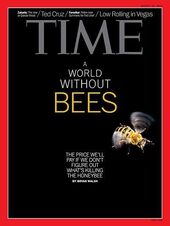
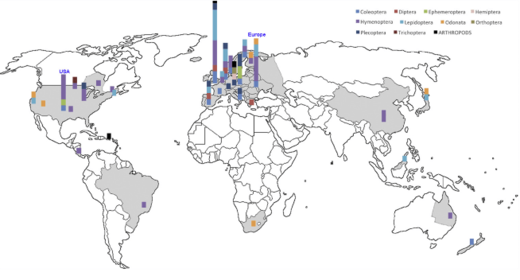
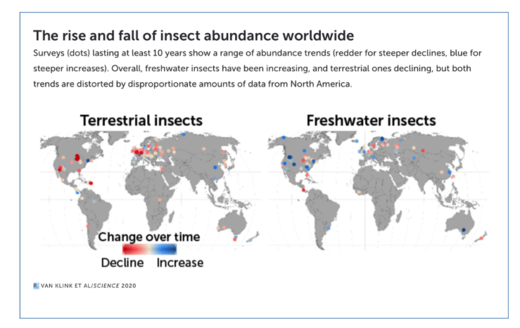
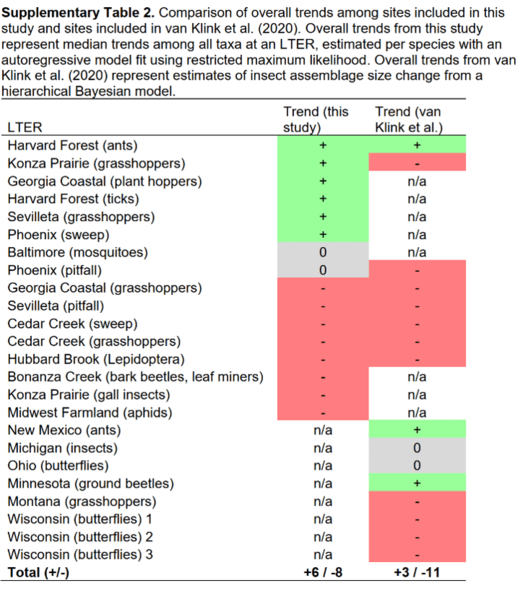











Divide flying from ground crawlers? Flying insects and the birds that feed on them disappearing yoy? Exclude flys?
What a load of codswollop! There is a loss of insects and it´s a real threat. Years ago, probably you can´t remember it, but a short drive to the shop and the front of your car was black with insects. Trains were sandblasted in insect bodies. In fact one of the things sold at petrol stations were items with which you could get rid of the insects on your car.
These days…. Nothing, I have never seen such clean cars and trains. So yes! I thing that denying the loss of insects make you part of the problem.
Saunders noted an appallingly selective and apparently willful misrepresentation and manipulation of the data
This is what lefties do best. Create fake science, fake hoaxes, false flags, subversion, misrepresentation, lies, deciet, propaganda, blackmail, and bribery.
No wonder all institutions which were once trusted are now scoffed at and ridiculed.
If you want to see a very good film on insects, then try, The Helstrom Chronicles.
I went to see that in the theater. I liked it so much, I went to see it twice. This was back when it was 75 ¢ to see a film.
Insects will probably outlive mankind. Those little bastards are tough as nails. That being said, I would still like to see more honeybees and praying mantises.
https://humansarefree.com/2021/07/big-tech-companies-agree-to-work-together-in-internet-freedom-crackdown.html
Typical assh0lers.